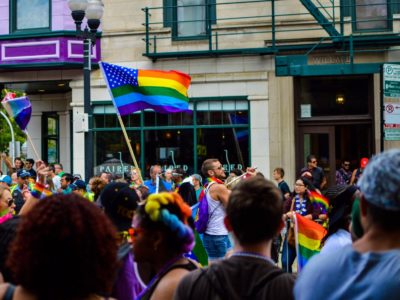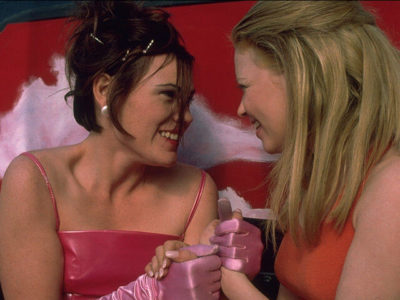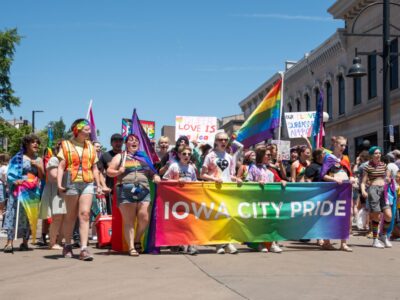You might wear your school emblem on your sweatshirt or your sports team on your jersey. You might brandish your state on your laptop with stickers and hoist your country’s flag right outside your house. Why do we do this? Personal pride of course. But don’t forget the importance of an identification with something and the connection you feel. The Pride Flag’s promotion in mainstream merchandising brings pleasure to so many. We can keep those rainbow colors on our backpacks, our clothes and everywhere else to let the world know who we are — and that we’re proud of it. So long as we’re showing off our pride, we should know the history behind this universal flag. As college kids, we can’t let the queer movement of the past generations fade. Know where we come from, how we got here and wear that rainbow with a knowledgeable pride.
Read on to see what made the Pride Flag what it is today.
The History Behind the First Rainbow Flag

The first rainbow flag arose in 1978 to symbolize gay pride. Activist Gilbert Baker designed it in its original form, which consisted of eight colors. These colors carried their own meaning. Hot pink aligned with sex, red with life, orange with healing, yellow with sunlight, green with nature, turquoise with magic and art, indigo with serenity and violet with spirit.
Baker created it as an alternative to the Pink Triangle — the previous symbol used in the queer movement. The Pink Triangle carries a lot of history as the signifier for a homosexual man during World War II, and Baker worked on this flag for a celebration of queerness. That June, the Gay Freedom Day Parade flew the rainbows that would come to influence the subsequent Pride flags.
“Learning queer history is so important because we need to know what happened in the past so we can create a better future,” St. John’s University Spectrum member Grace Garlisi said.
Baker’s creation indeed went on to spark a brighter future — different iterations of flags continue to be created in order to celebrate different members of the community. In the 1980s during the AIDS crisis, the “Victory Over AIDS” flag flew to support the queer members affected by the epidemic. This version welcomed a black stripe to its end. This crisis impacted the LGBTQ+ harder than most and waving this flag carries an immense amount of pride.
Introduction to More Inclusive Pride Flags
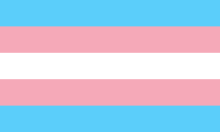
Monica Helms created the original five-striped Transgender Pride flag in 1999. Standing for the colors often assigned to boys and girls, it’s designed with baby blues and pinks. A white space also holds itself on the trans flag for those who fit outside the categorizes of male or female.
While covering all the flags would be difficult, we can still appreciate a few that have other identities. Lesbians, for example, don’t have one standard flag. In 1999, the labrys lesbian flag came out, bearing the weapon associated with female empowerment on the inverted black triangle — the signifier of homosexual women. Since the 2010s, though, our generation saw and even participated in the creation of a few more variations. This includes ones with shades of pink, purple and orange.
The Bisexual Flag
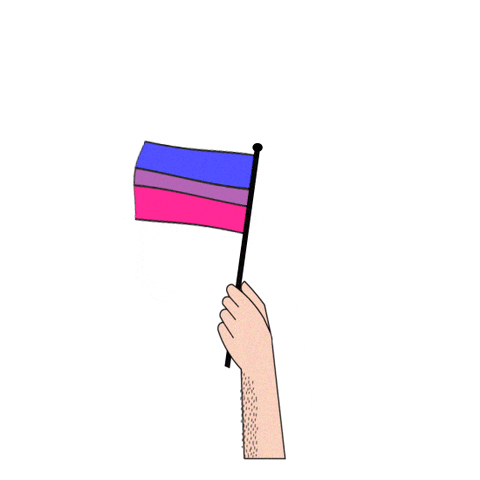
So long as we’re covering flags for different identities — we should of course take time to appreciate the Bisexual Pride flag. Created in 1998 by Michael Page, the three colored flag promotes visibility for bisexuals in the straight and queer world. Derived from a bisexual women’s group’s use of the pink, blue and lavender triangles, Page added them as stripes. Here, the pink represents same sex attraction and blue opposite sex. The purple, he described, truly encapsulated the blending of the attractions for bisexuals.
“When I first started learning about the queer community all I knew about it was the gay pride flag, but as I learned more and found the bisexual flag, it actually made me feel like part of the community. It was almost like validation of my identity, seeing it represented like that,” St. John’s University junior Sam Haynia said. “I think it’s important to educate people on queer history because it exists and it’s important. There has been a struggle over so many years that cannot be erased. It’s also important to share for younger members of the queer community because it’ll prove to them that they aren’t alone and this isn’t something new. Queer history is real and beautiful and even dark at times. If more people were exposed to it, I believe that finding comfort in identity would become a bit easier.”
Flags will continue to develop over time and new people will find the ones that connect to their identity.
The Pansexual Flag
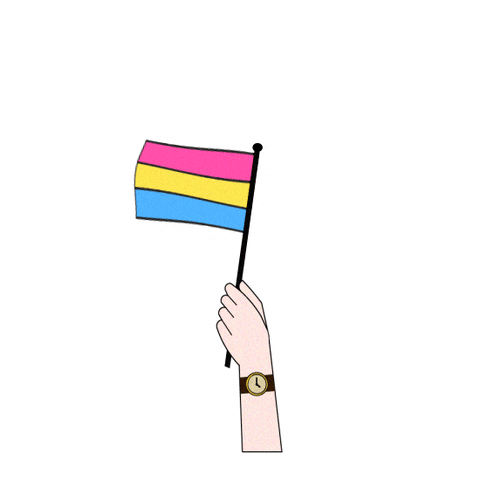
The Pansexual Flag arose in the 2010s as well, with three horizontal stripes: magenta, yellow and cyan. Respectively, they represent attraction to women, genderqueer people and men. Similarly, the asexual flag also came about in our generation, created by the Asexual Visibility and Education Network. Here, the black and gray stripes represent asexuality and demi/gray-sexuality respectively, while the white references allies not a part of the asexual community. Finally, the purple extends itself to the community at large.
The Gender Non-Conforming Flags
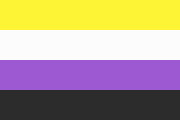
The Genderqueer Flag carries three horizontal stripes—lavender for androgyny, white representing agender identities and green for those outside the binary. Marilyn Roxie designed this in 2011 and it is only one of the gender identity flags used today. Another, usually called the Nonbinary Flag, arose in 2014. Kye Rowan made the yellow for those outside the binary, white for inclusion, purple to represent the mixture in gender identities, and black for agender identities.
The Flag’s Continued Evolution
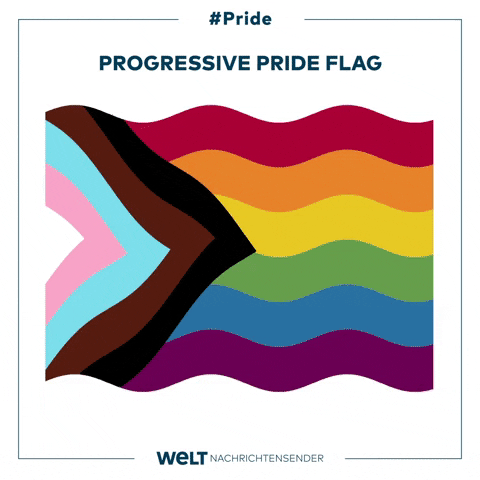
Don’t worry, the flag’s history extends to our lifetime too. The year 2017 saw the addition of black and brown stripes in order to celebrate people of color in the LGBTQ+ community. Philadelphia broadcasted these two colors on the six-striped version of Baker’s design. Seattle Pride continued an even more inclusive addition to the flag, designed by Daniel Quasar. Here they administered a version including the colors of the Trans Pride flag alongside the black and brown stripes. The added colors are aesthetically placed in a triangle at the hoist. Called the Progress Pride flag, this version certainly isn’t one to be left behind by our generation. Quasar even sells flags now for a portion of the profits to be donated to organizations aiding transgender people of color.
In 2018, Estêvão Romane’s design brought back eight of Baker’s original colors. That’s right, turquoise and pink flew once again. Plus, he added a white stripe in its center. Meant to represent peace and unity among the other diverse colors, we appreciate the retro return to the flag that started it all.
“Taking the time to learn about queer history is really important. The experience opens one up to historical events that are usually ignored in history class. These lessons are vital in two ways: it allows for reflections on the lived experiences of our queer ancestors, as well as providing a reminder of how far the straggle for LGBTQ+ rights has come and how far we must go,” St. John’s University Spectrum President Peter Trapenese said.
Of course, more flags exist for all kinds of identities. The flags will evolve and strive to include all in the queer community. Even as we keep moving forward in time, it’s still important to look back at where we came from too.

